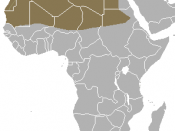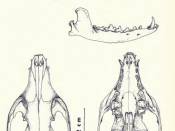The Fennec Fox lives in the arid deserts of Africa, such as the Sahara, Kalahari and the Namib Desert. As u will see in part b of the assignment (enclosure design) I have mimicked this quite easily, as the enclosure will be sited at or very near the release site. The foxes will be able to smell their environment; the substrate used will be sand, which is obviously natural to the area.
In the wild fennec fox will usually live in groups, usually family groups, they burrow up to 10 feet underneath the sand, in order to make their dens, which they use to escape the blistering heat of the deserts. (The fennec fox is nocturnal, usually arising form its den in the early evening as the sun is setting, so it has time to hunt and feed before the sun rises).
In order to make the enclosure as natural to the fox as its natural habitat, they will be in a shed type building.
The foundation for this shed will be about 12 feet below the surface, and the she will have no floors, and will be very deep, so the burrows can be mimicked with ease. This will be done by pre- digging the burrows and setting them with concrete, this ensures that the animal's carer knows where the burrows are and knows where they can be found in an emergency). Any flora which is commonly found in the area will be put in the enclosure, such as small shrubs and bushes which berries grow on, as these are a vital part of the fox' diet.
Food can sometimes be scarce in the deserts, but fennec fox's have developed to be omnivorous whereas most canines are predominately carnivorous, they are essentially scavengers, eating whatever they come...


